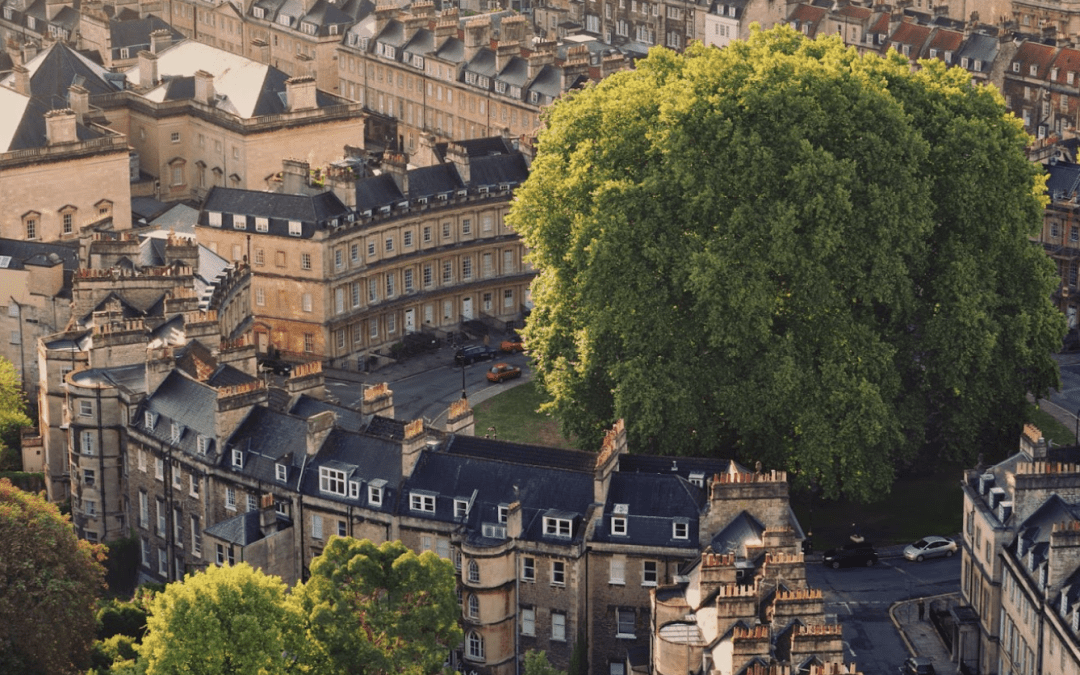Bath is home to several significant architectural beauty spots, from the Roman Baths to the magnificent Abbey. It is the only entire city in Britain to achieve World Heritage status, largely because of its architectural history.
The dominant architectural styles of Bath are Georgian and Victorian, so any repairs or new builds are often required to complement the traditional aesthetics and help ensure the city continues to have a cohesive look which is something we take very seriously at S&J Bath. Our Bath roofing not only fits the aesthetic but is built to last.
As you can imagine, the materials used for buildings are very important when it comes to helping preserve the look of the city. When it comes to roofing materials, there are a few specific materials that are favoured. According to Bath Preservation Trust, prevalent traditional materials in the Bath palette include painted cast and wrought iron, lead and natural slates (stone, Welsh, Westmoreland Green, and Delabole), just to name a few. So what are the best materials for your roofing project in Bath? We’ll be exploring each of the key materials in more detail below.
Slate
Slate has many historical links to Bath. Not only is it a naturally strong material but it absorbs little water, and is less susceptible to leaking and frost damage than others. As a truly durable material, slate roofing tiles remain the go-to for more traditional builds such as vintage homes, and historical restorations – just like those residing in Bath.
Most notably, the iconic terraced houses that make up the Royal Crescent have slate roofs. There are two types of slate, natural slate, and artificial slate which is actually composed of fibre cement. Natural slate can be an expensive investment but for a material that can often outlive the buildings it protects, it’s well worth the cost.
Roofshield Felt
Roofshield Felt Membrane is the only breathable felt on the market and is uniquely patented. Roofshield Felt is made up of three-layer non-woven spun-bonded polypropylene construction. It works as a secondary barrier to weather such as wind, rain and snow. It also eliminates inner condensation as an underlay in pitched roofs thanks to its low vapour resistance and air permeability.
Roofshield Felt is commonly used during a roof replacement or installation. It can be used as part of the ‘warm roof’ process due to its insulating properties, which in Bath’s climate, is greatly appreciated. It’s not a material that you can see when a roof is complete so it’s often an underappreciated but vital element of roofing.
Lead
Lead was commonly used by the Romans, hence its historical connection to Bath. Lead has been used for hundreds of years and is still commonly used on most roofs today. Lead is well known for outliving the life span of buildings with little to no drop in performance after 200 years.
Surprisingly, lead is one of the most eco-friendly roofing materials. Lead can be easily melted down and reused, even once it’s reached the end of its lifespan on a roof. Once it has been removed and melted down it can be reformed and reapplied to a new roof without any compromise to its durability or appearance. Lead can be almost endlessly recycled with little to no wasteful by-products. Read more about the types of roofing materials we commonly use.
Local Roofing Experts In Bath
Unsure if your roof needs replacing? At S&J Bath, we only work with the very best high-quality materials and use advanced roofing techniques to deliver a roof that will last for many years to come, as well as taking care to match the aesthetics of the surroundings.
We take pride in delivering a first-class service on time and to a budget. If you would like more information on our roofing services in Bath please get in touch with a member of the team today on 01225 951 223 today.




